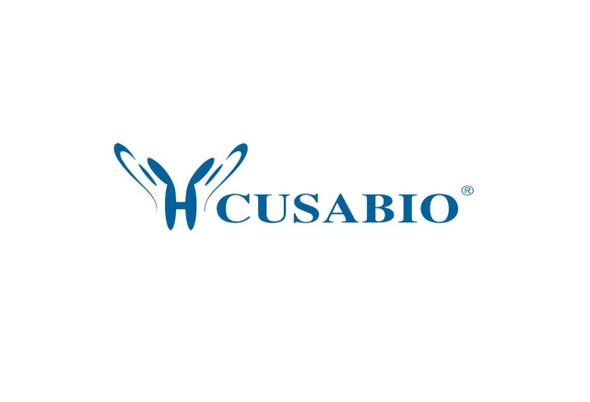Cusabio Human Recombinants
Recombinant Human Caprin-1 (CAPRIN1) | CSB-BP614529HU
- SKU:
- CSB-BP614529HU
- Availability:
- 3 - 7 Working Days
Description
Recombinant Human Caprin-1 (CAPRIN1) | CSB-BP614529HU | Cusabio
Alternative Name(s): Cell cycle-associated protein 1 (Cytoplasmic activation- and proliferation-associated protein 1) (GPI-anchored membrane protein 1) (GPI-anchored protein p137) (GPI-p137) (p137GPI) (Membrane component chromosome 11 surface marker 1) (RNA granule protein 105 GPIAP1) (GPIP137) (M11S1) (RNG105)
Gene Names: CAPRIN1
Research Areas: Others
Organism: Homo sapiens (Human)
AA Sequence: PSATSHSGSGSKSSGPPPPSGSSGSEAAAGAGAAAPASQHPATGTGAVQTEAMKQILGVIDKKLRNLEKKKGKLDDYQERMNKGERLNQDQLDAVSKYQEVTNNLEFAKELQRSFMALSQDIQKTIKKTARREQLMREEAEQKRLKTVLELQYVLDKLGDDEVRTDLKQGLNGVPILSEEELSLLDEFYKLVDPERDMSLRLNEQYEHASIHLWDLLEGKEKPVCGTTYKVLKEIVERVFQSNYFDSTHNHQNGLCEEEEAASAPAVEDQVPEAEPEPAEEYTEQSEVESTEYVNRQFMAETQFTSGEKEQVDEWTVETVEVVNSLQQQPQAASPSVPEPHSLTPVAQADPLVRRQRVQDLMAQMQGPYNFIQDSMLDFENQTLDPAIVSAQPMNPTQNMDMPQLVCPPVHSESRLAQPNQVPVQPEATQVPLVSSTSEGYTASQPLYQPSHATEQRPQKEPIDQIQATISLNTDQTTASSSLPAASQPQVFQAGTSKPLHSSGINVNAAPFQSMQTVFNMNAPVPPVNEPETLKQQNQYQASYNQSFSSQPHQVEQTELQQEQLQTVVGTYHGSPDQSHQVTGNHQQPPQQNTGFPRSNQPYYNSRGVSRGGSRGARGLMNGYRGPANGFRGGYDGYRPSFSNTPNSGYTQSQFSAPRDYSGYQRDGYQQNFKRGSGQSGPRGAPRGRGGPPRPNRGMPQMNTQQVN
Source: Baculovirus
Tag Info: N-terminal 10xHis-tagged
Expression Region: 2-709aa
Sequence Info: Full Length of Mature Protein
MW: 80.7 kDa
Purity: Greater than 85% as determined by SDS-PAGE.
Relevance: May regulate the transport and translation of mRNAs of proteins involved in synaptic plasticity in neurons and cell proliferation and migration in multiple cell types. Binds directly and selectively to MYC and CCND2 RNAs. In neuronal cells, directly binds to several mRNAs associated with RNA granules, including BDNF, CAMK2A, CREB1, MAP2, NTRK2 mRNAs, as well as to GRIN1 and KPNB1 mRNAs, but not to rRNAs.
Reference: "RNA granule protein 140 (RNG140), a paralog of RNG105 localized to distinct RNA granules in neuronal dendrites in the adult vertebrate brain." Shiina N., Tokunaga M. J. Biol. Chem. 285:24260-24269(2010)
Storage: The shelf life is related to many factors, storage state, buffer ingredients, storage temperature and the stability of the protein itself. Generally, the shelf life of liquid form is 6 months at -20?/-80?. The shelf life of lyophilized form is 12 months at -20?/-80?.
Notes: Repeated freezing and thawing is not recommended. Store working aliquots at 4? for up to one week.
Function: May regulate the transport and translation of mRNAs of proteins involved in synaptic plasticity in neurons and cell proliferation and migration in multiple cell types. Binds directly and selectively to MYC and CCND2 RNAs. In neuronal cells, directly binds to several mRNAs associated with RNA granules, including BDNF, CAMK2A, CREB1, MAP2, NTRK2 mRNAs, as well as to GRIN1 and KPNB1 mRNAs, but not to rRNAs.
Involvement in disease:
Subcellular Location: Cytoplasm, cytosol, Cell projection, dendrite
Protein Families: Caprin family
Tissue Specificity: Ubiquitous.
Paythway:
Form: Liquid or Lyophilized powder
Buffer: If the delivery form is liquid, the default storage buffer is Tris/PBS-based buffer, 5%-50% glycerol. If the delivery form is lyophilized powder, the buffer before lyophilization is Tris/PBS-based buffer, 6% Trehalose, pH 8.0.
Reconstitution: We recommend that this vial be briefly centrifuged prior to opening to bring the contents to the bottom. Please reconstitute protein in deionized sterile water to a concentration of 0.1-1.0 mg/mL.We recommend to add 5-50% of glycerol (final concentration) and aliquot for long-term storage at -20?/-80?. Our default final concentration of glycerol is 50%. Customers could use it as reference.
Uniprot ID: Q14444
HGNC Database Link: HGNC
UniGene Database Link: UniGene
KEGG Database Link: KEGG
STRING Database Link: STRING
OMIM Database Link: OMIM











